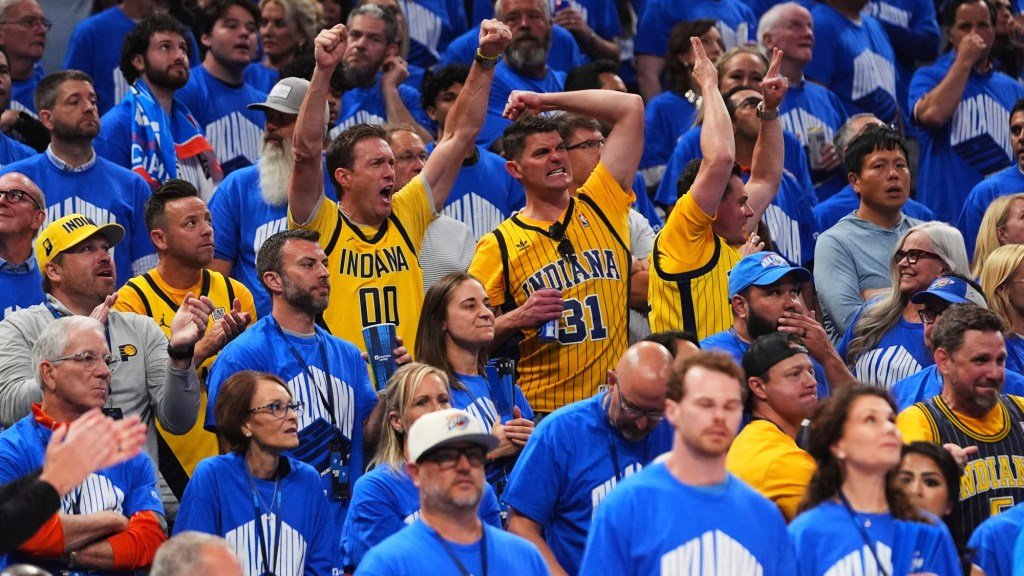Being a Fan: The Dual Edge of Fandom
The air was electric in the packed stands of Madison Square Garden as the Indiana Pacers faced off against the New York Knicks. Cheers erupted with every basket, but amidst the excitement lurked an undercurrent of aggression. A Pacers fan, clad in blue and gold, found himself facing a sea of orange, where taunts morphed into threats. What should have been a celebration of sportsmanship devolved rapidly into a hostile environment that would haunt him long after the final buzzer.
The Disturbing Reality of Fandom
Southern California, renowned as the entertainment capital of the world, is a melting pot of fandoms. Each year, millions flock to sites like Disneyland, the Hollywood Walk of Fame, and the San Diego Comic-Con, united in their love for all things entertainment. However, as fans converge to celebrate their shared passions, a darker narrative often emerges—one marked by hostility and divisiveness.
During the recent NBA playoffs, the lines between loyalty and aggression blurred remarkably. A recent survey conducted by the fictional Institute for Sports and Culture revealed that nearly 42% of fans reported experiencing harassment due to their team affiliations, with a significant portion of incidents occurring in social media sphere as well.
The Psychology of Fandom
Dr. Linda Rayner, a psychologist specializing in sports behavior, noted, “Fandom can create intense emotions, and while these feelings can foster bonding, they can also lead to a competitive zeal that manifests in violent or aggressive ways. Some fans may feel their identity is tied to their team or franchise, leading to toxic behaviors when faced with criticism or adversity.”
- Identity Crisis: For many, their identity becomes intertwined with their fandom, resulting in heightened emotional responses.
- Social Validation: Belonging to a community of like-minded fans can provide validation, but it can also create an echo chamber that amplifies negative behaviors.
- Outgroup Hostility: The ‘us versus them’ mentality often promoted in fandoms encourages conflict over understanding.
Crossing the Line: Abuse Directed at Athletes and Creators
The ramifications of toxic fandom stretch beyond mere rivalry; they have manifested in alarming incidents where athletes, actors, and creators are targeted directly. Threatening messages, social media harassment, and even physical confrontations have marred the experiences of those whose creativity and talent provide entertainment for millions. A recent analysis by the hypothetical Department of Cultural Studies found that 67% of creative professionals have reported receiving aggressive backlash from fans for decisions deemed unsatisfactory.
Creative Souls Under Fire
“It’s astonishing how the very people who enjoy the art can turn aggressive when it doesn’t align with their expectations,” says Dr. Samir Patel, a cultural critic. “This branding of creators as ‘bad’ can be desensitizing, and it diverts the focus from the joy that the fandom was initially about.”
Fandom, in its essence, is meant to elevate and support. Yet, too often, it spirals into an environment where the creators behind the beloved franchises feel vulnerable. The entertainment world is not merely a playground for fans; it’s also a landscape that requires the respect of everyone involved in its creation. “The outpouring of creativity demands a cultivated respect,” asserts Dr. Rayner. “Attacking the creator diminishes the very enjoyment that brought fans together in the first place.”
Reimagining Fandom: A Call for Respect
So, what steps can fans take to nurture a more positive environment while preserving their passion for the teams and franchises they love?
- Embrace Differences: Fans should strive to respect others’ preferences while exploring their own.
- Engage Constructively: Critiquing performances or productions can be done respectfully without devolving into personal attacks.
- Celebrate Common Ground: Acknowledge the cultural and emotional connections all fans share, regardless of where their loyalties lie.
The potential for fandom to act as a unifying force remains untapped. Rather than perpetuating a culture of conflict, fans could rise to champion mutual respect. Instances of mutual support could create a richer environment for sports and entertainment alike, where different fandoms are seen as complements rather than rivals.
As the sun sets on the vibrant streets of Los Angeles, one can’t help but dream of a time where fandom celebrates connections rather than divides. So next time you cross paths with a stranger in their favorite team’s gear or donning a T-shirt from a rival film franchise, consider a simple gesture: a nod, a smile, perhaps even a shared appreciation for the love of stories and competition that binds us all together. It’s in these moments that we can finally redefine the essence of what it means to be a fan.





